Spirea - The Ultimate Growing Guide from Proven Winners®
Spirea is one of the most commonly used landscape plants, and for good reason. This hardy deciduous shrub has captivating three-season interest, with a graceful habit, attractive foliage and flowers that bloom over a long time.

Buy spirea bushes - Order shrubs online and have them shipped right to your door
Spirea is easy to grow in nearly any garden. It's hardy in USDA zones 4-8, with many selections expanding that to 3-9. It is tolerant of a wide range of conditions, including poor soil, heat, cold, humidity, drought and urban pollution. Not only is spirea low-maintenance, but it also attracts butterflies and other insect pollinators.
These flowering shrubs’ delicate lacy flowers can be white, pink, red or mauve. Finely toothed foliage comes in shades of green, chartreuse, gold, blue, with some varieties putting on a showy fall display.
PLANTING & CARING FOR SPIREA
How to plant: Follow these steps and space 2-15 feet apart, depending on the variety. Look to your plant’s tag for specific recommendations.
- Dig a hole slightly deeper than the root ball and 2 times wider.
- Remove the plant from the nursery pot and loosen the soil around the roots.
- Set the plant in the hole with the top of the root ball at or slightly above soil level.
- Backfill the hole with soil and tamp down slightly to remove air pockets. Water well.
- Mulch with a layer of shredded bark to retain moisture and suppress weeds.
Learn more: How to Plant a Shrub
Soil: Spirea isn’t fussy about soil type or pH. Make sure soil is well-draining.
Watering: Soil should be kept moist but not soggy. Water deeply but less frequently to encourage deep, healthy roots. Spirea is drought-tolerant once established.
Fertilizing: In early spring, apply a controlled-release fertilizer formulated for trees and shrubs according to instructions. Reapply each spring.
Related: 23 Low-Maintenance Plants for Landscapes
SPIREA PLANT TYPES
There are many different types of spirea. Here are a few of the most commonly grown.
Japanese spirea (Spiraea japonica) has the widest color range, with foliage in shades of green, blue, gold or chartreuse. Flowers bloom from late spring into summer in colors of pink, purple, red or white.
Birchleaf spirea (Spiraea betulifolia) has a dense mounding habit with white flowers and toothed birch-like green leaves. A kaleidoscope of rich fall color occurs in shades of red, orange and purple.
Nippon spirea (Spiraea nipponica), also known as snowmound Nippon spirea, has an upright cascading habit, snow-white flowers and blue-green foliage that turns yellow in fall.
TRY THESE PROVEN WINNERS® VARIETIES
Spirea comes in a range of forms, flower and foliage colors. Try these in your landscape:
|
|
|
|
|
|
|
SPIREA FAQ’s
Does spirea need full sun?
Spirea performs best in full sun, producing more blooms, vibrant color and brighter fall foliage. Plants can take light shade, with spring bloomers more shade tolerant than summer bloomers.
Is spirea a perennial?
Spirea is perennial in the sense that it comes back each year. But it is more correctly known as a shrub because its woody branches persist above ground all year round, and in spring, the new growth emerges not from the ground but on those branches.
Is spirea deer resistant?
Japanese spirea has good deer resistance. The Double Play® series is typically ignored by deer and even rabbits.
Should spirea be cut back?
Spirea has a naturally rounded habit without pruning. If you wish, you can trim after the flowers fade, which will encourage colorful new growth. Remove the oldest, woodiest stems every couple of years to keep growth fresh and vigorous.
Does spirea stay green in winter?
All varieties will lose their foliage in winter, even in milder climates.
How big do spirea bushes get?
Mature size ranges from 2-10 feet tall and wide. This fast grower can add up to 2 feet of new growth in a single season. Plants can be kept smaller with pruning.
Can spirea grow in pots?
Yes, spirea makes a good potted shrub! Try Double Play Doozie® for months of bloom or Double Play® Candy Corn® for a compact, colorful container. See our Top 10 Shrubs for Containers & Small Spaces.
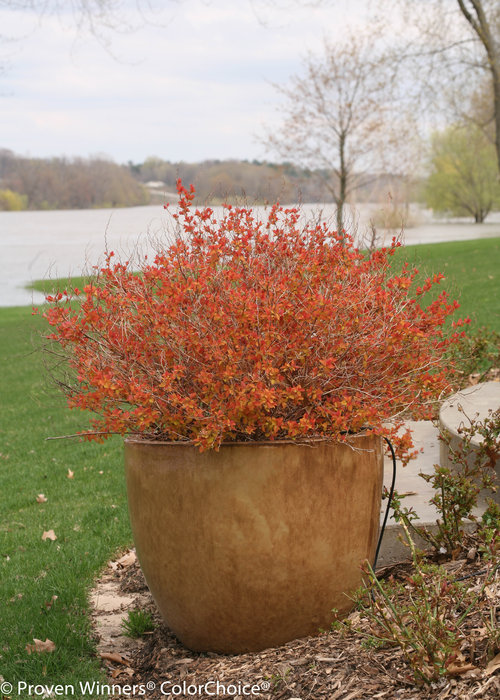 HOW TO USE SPIREA IN YOUR LANDSCAPE
HOW TO USE SPIREA IN YOUR LANDSCAPE
This versatile shrub can be used in many ways. Here are some ideas:
- Feature a larger variety as a dramatic stand-alone specimen
- Plant in a row as a privacy screen along a property line
- Use smaller to medium varieties to divide garden rooms
- Incorporate a medium to large type as a background plant in a cottage-style or mixed border
- Use any size or type to accentuate a woodland setting
- Combine in a foundation planting along with other shrubs
- Use as low hedging along a pathway
- Massed along a slope for erosion control
- Smaller specimens can be planted in containers
Guide: How to Make a Flower Bed
COMPANION PLANTS
Many plants will complement spirea in the landscape. Here are some suggestions.
Combine gold foliaged varieties with complimentary colored plants such as:
- Sunjoy Mini Maroon® barberry
- Wine & Roses® weigela
- Dolce® ‘Cherry Truffles’ coral bells
- Sunsparkler® ‘Plum Dazzled’ stonecrop
For continuous bloom throughout the growing season, grow spirea with other shrubs that bloom at different times, such as:
- Dandy Man Color Wheel® rhododendron
- Interstella® Lily of the Valley
- Bobo® hydrangea
- Sunshine Blue® bluebeard
Other companions include:
- Sweet Emotion® abelia
- Sprinter® boxwood
- ‘Violet Profusion’ salvia
- ‘Little Bunny’ miniature fountain grass



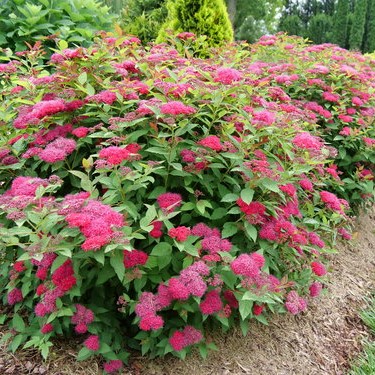 Double Play Doozie®
Double Play Doozie® Double Play® Candy Corn®
Double Play® Candy Corn®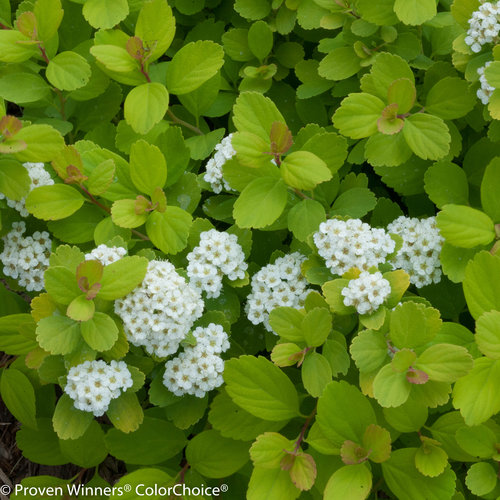 Glow Girl®
Glow Girl®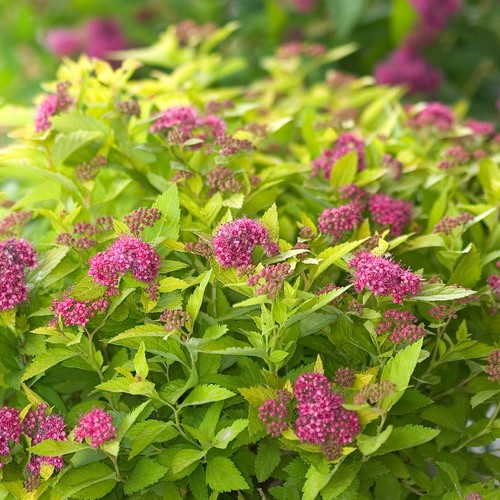 Double Play® Gold
Double Play® Gold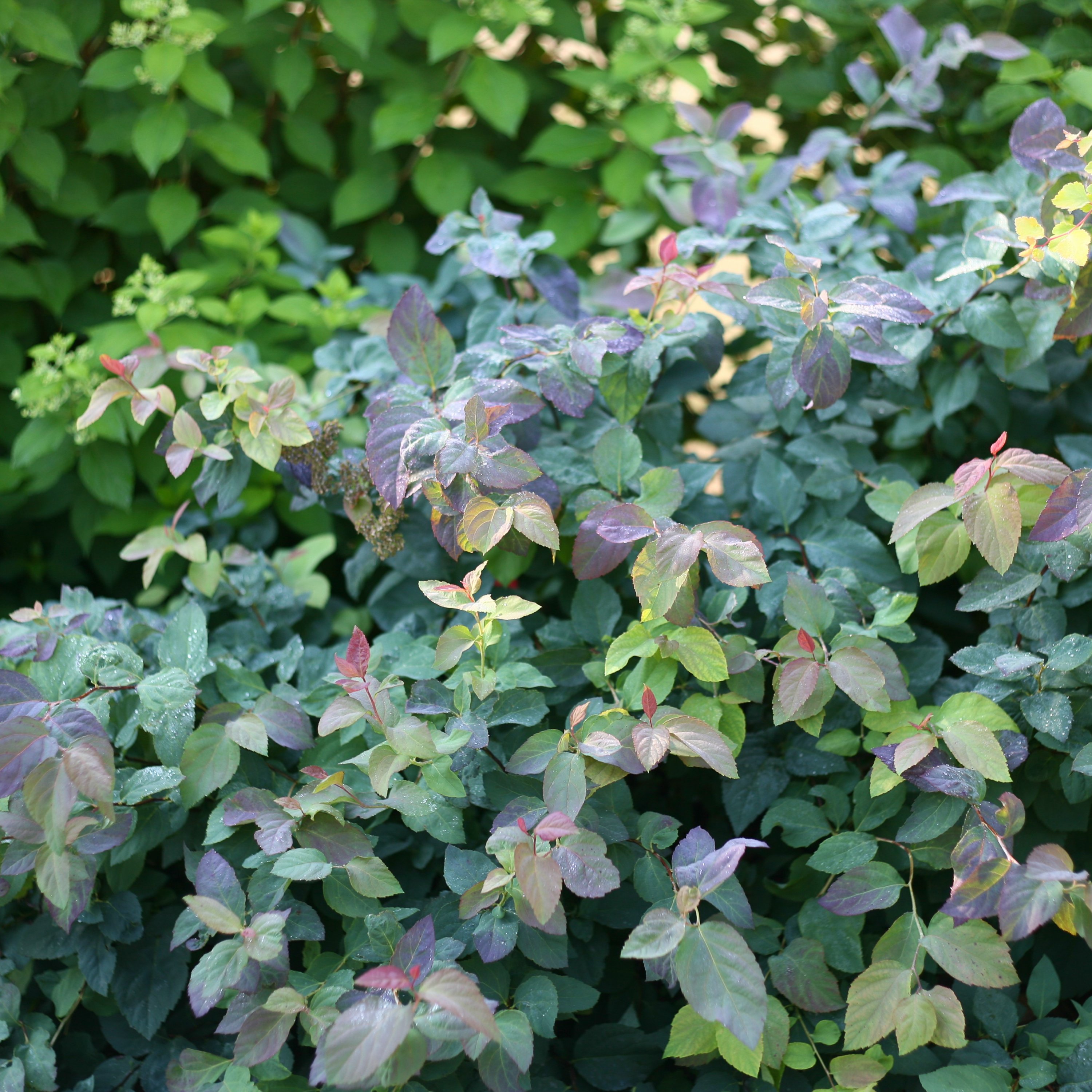
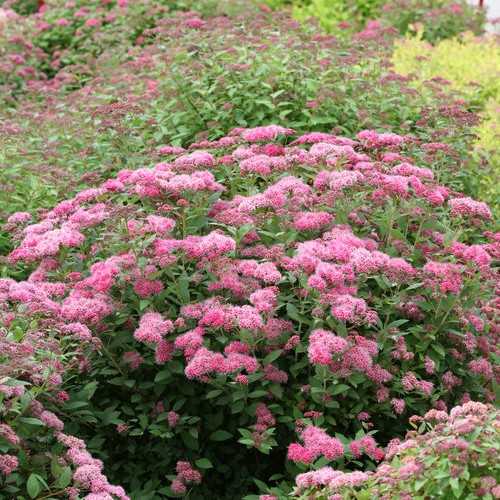
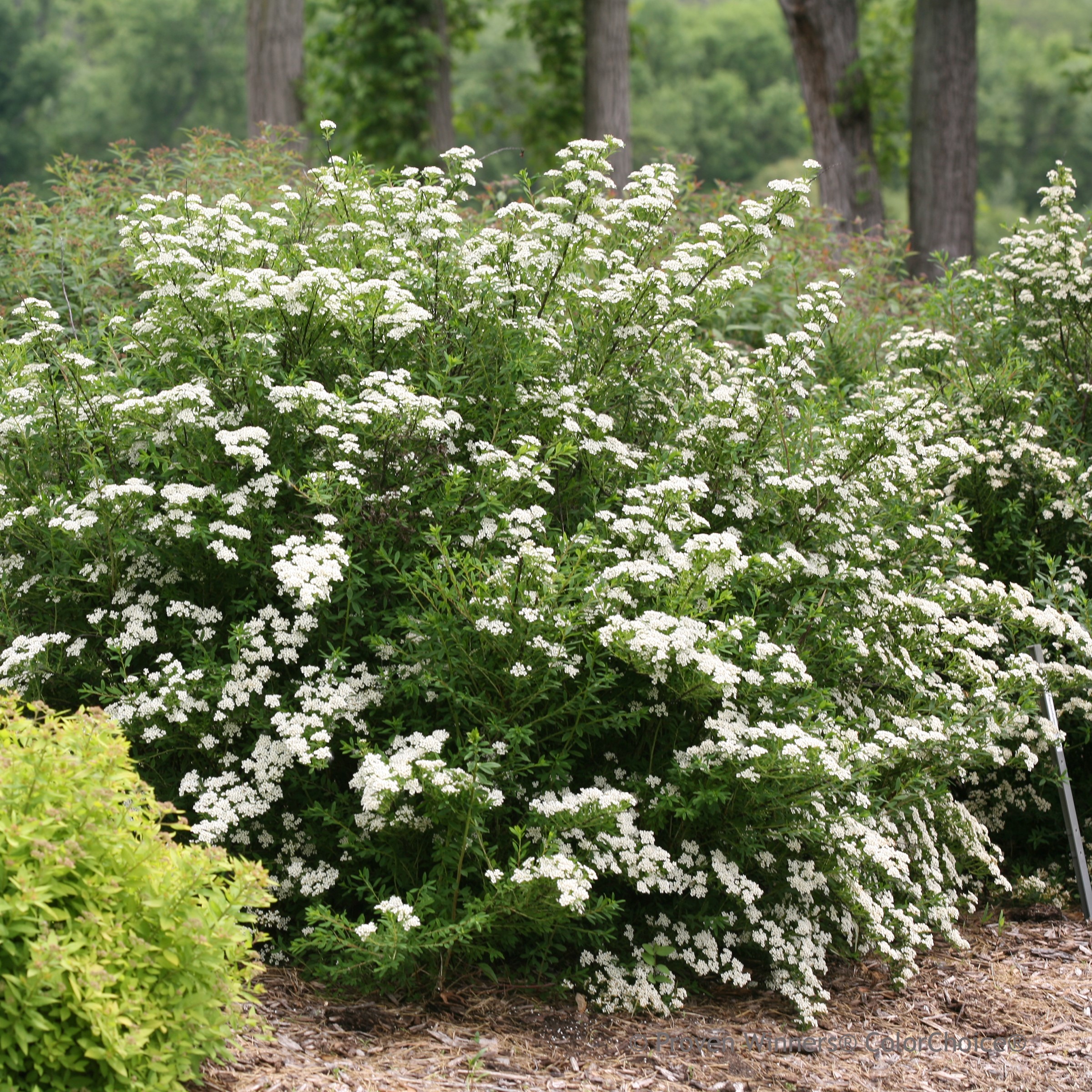 Wedding Cake®
Wedding Cake® HOW TO USE SPIREA IN YOUR LANDSCAPE
HOW TO USE SPIREA IN YOUR LANDSCAPE
